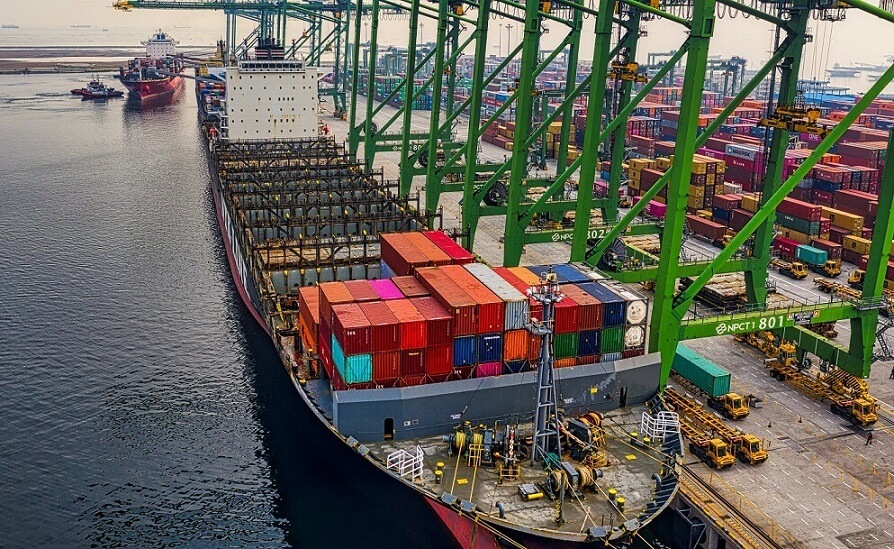Key Consideration of Cargo Lashing Calculations
/ by Engr. Fahad AnsariMarine transportation of cargo can be seen all over the world crossing the borders and experiencing sea weather. Every individual involved in packaging and securing of cargo for sea and or land transportation is aware of securing the cargo on board to prevent its shifting from stow causing damage to it due to various forces acting on the cargo during transit. Such cargo on board is secured by lashing and shoring. The lashing of cargo is carried out using various lashing materials such as belts, chains, stopper plates etc. However, few of them know which type of lashings have advantage over the other type for particular shape, size and weight of cargo.
Many times it was observed during the investigation of the cargo damage claim that either packaging or the lashing was not sufficient. By saying that, we don' t mean that all the cargo claims were only due to improper or insufficient lashing. Few of the key points missed to take care of that we could see during our investigation in few of the claims we attended are mentioned and elaborated below.
1. Calculating the acceleration force:
The acceleration force acting on the cargo depends on the location of the cargo on-board the vessel. Without calculating the force acting on the cargo, securing it is like aiming the arrow with the closed eye.
Similarly, we will deliver the same level of assurance on potential conflicts, even before we accept any substantive information or instructions.
2. Ignoring the reduction of lashing efficiency:The inclination of the lashing belt with respect to the ship' s deck will distribute the lashing efficiency in longitudinal and transverse direction. These distribution could vary between 70:12 ratio for angle of inclination combination of 45 and 80 degree with loss of 18% lashing efficiency due to inclination
3. Ignoring the tipping force / possibility:In many cases the shipper seen missing to secure the cargo with respect to topping during rolling. This is mainly because they miss the importance of centre of gravity AKA CoG height which is one of the factor for checking the topping possibility of the cargo. Other factor that regulate the topping force of the cargo is its size and weight. Cargo width and weight is directly proportional to the safety when topping is concern. Which mean heavier and wider cargo are more stable then lighter and narrow width cargo with respect to topping effect.
4. Friction Forces:One of the most common mistakes is ignoring the right coefficient of friction when the top lashing of the cargo are involved. This is mostly seen for break bulk cargo on flat-rack container. Since the part of the flat rack container deck is of metal instead of wood and when the skid / saddle carrying the cargo makes contact on metal then the top lashing of that cargo is good for nothing since there is no friction between steel to steel contacts. It' s always good to use hard dunnage or rubber mat in such case and use different type of lashing to secure it.
5. Lashing point and Corner edge:If you are involved in lashing even by just having a glance on your cargo being secured on Flat-rack container, you would have seen more than one lashing hook on designated lashing points. The force exerted by lashing belt/chain at these hooks should not exceed their SWL. Other than that the condition of the lashing point should be intact and without any loss in its strength else it may not be the belt rather the point that may break. Chaffing of lashing belt on the corner edge especially under tension may amplify the damage and would result in parting due to chaffing under tension.
6. Type of lashing gear:The generally used lashing materials are nylon belts, chains and wires. Nylon belts have higher chances of elongation when compared to chain and wires. Therefore use of nylon belts where length of lashing material needed is higher, one should avoid using nylon belt. Chains are too tough to result in contact damage if comes in contact with cargo. End of wire will require special attention on wire rope clip for end preparation. At the least 3 rope clip in opposite direction should be used on each end.
These are the major key points other than many small checks which would also require an attention. A guidance and supervision of a professional is imminent when safe securing of high value cargo is involved. We at Constellation Marine Services, have well experienced Engineers and Naval Architects who have been frequently attending such lashing surveys are available round the clock to take care of lashing / securing requirements of large / heavy and high value project cargo.
Contributed byNo tags for this post.




Leave a Reply
Want to join the discussion?Feel free to contribute!